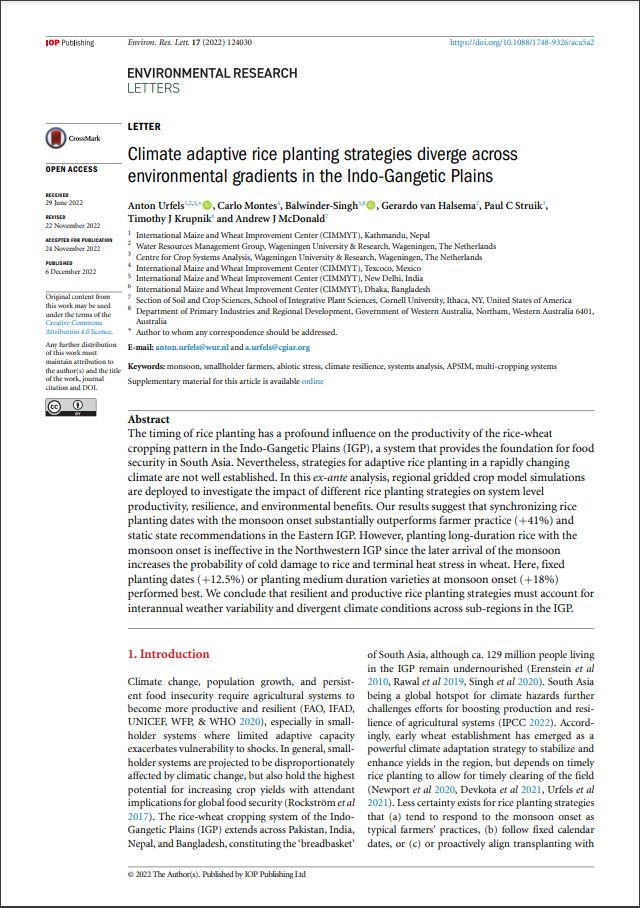The timing of rice planting has a profound influence on the productivity of the rice-wheat cropping pattern in the Indo-Gangetic Plains (IGP), a system that provides the foundation for food security in South Asia. Nevertheless, strategies for adaptive rice planting in a rapidly changing climate are not well established. In this ex-ante analysis, regional gridded crop model simulations are deployed to investigate the impact of different rice planting strategies on system level productivity, resilience, and environmental benefits. Our results suggest that synchronizing rice planting dates with the monsoon onset substantially outperforms farmer practice (+41%) and static state recommendations in the Eastern IGP. However, planting long-duration rice with the monsoon onset is ineffective in the Northwestern IGP since the later arrival of the monsoon increases the probability of cold damage to rice and terminal heat stress in wheat. Here, fixed planting dates (+12.5%) or planting medium duration varieties at monsoon onset (+18%) performed best. We conclude that resilient and productive rice planting strategies must account for interannual weather variability and divergent climate conditions across sub-regions in the IGP.

